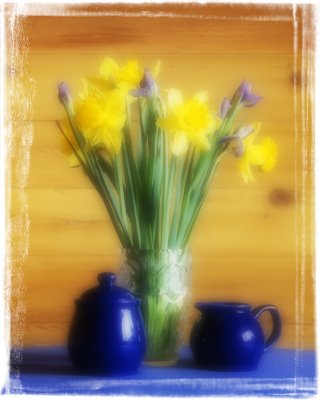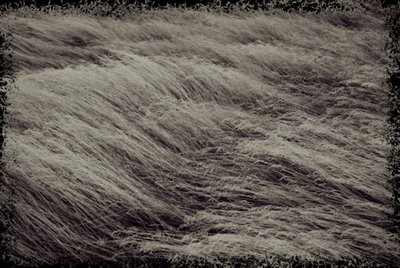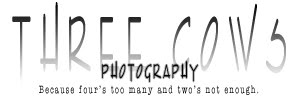
Wednesday, November 29, 2006
Cameron Creek, Summer
 Waterton Lakes National Park.
Waterton Lakes National Park.If you haven't been, go. Then head down across the line to Glacier National Park. Best place in the world (that isn't tropical!).
Chrome on the Nash
Chrysler
Monday, November 20, 2006
"Darth Nash"
 I call this the "Darth Vader" car. It's my dad's old 1950's era "Nash". I used a 28mm lens on my Olympus ON-2N; the camera is actually only about12 inches away from the front of the car though you wouldn't know it to look at it. The image is unmanipulated. There's some vignetting in the upper corners which I really should do something about; I just don't find it terribly intrusive at the moment.
I call this the "Darth Vader" car. It's my dad's old 1950's era "Nash". I used a 28mm lens on my Olympus ON-2N; the camera is actually only about12 inches away from the front of the car though you wouldn't know it to look at it. The image is unmanipulated. There's some vignetting in the upper corners which I really should do something about; I just don't find it terribly intrusive at the moment.
Outrider
 This is a shot of an outrider at the chuckwagon races during the Calgary Stampede. I like the bit of color in the hat, shirt and blanket in an otherwise subdued photo.
This is a shot of an outrider at the chuckwagon races during the Calgary Stampede. I like the bit of color in the hat, shirt and blanket in an otherwise subdued photo.
Nails
Thursday, November 09, 2006
Abstract "Nash"
 This is an abstract of one of my dad's old cars - a Nash from somewhere in the 50's. It was taken with my Yashica-Mat 124, a medium-format twin-lens camera from the sixties. It was exposed on Ilford 100 Delta 120 format film (if my memory serves me right) and scanned professionally to a size of 9000x9000 pixels. I messed with two versions - a red-toned and a blue, and for a while couldn't decide which I liked better. In fact, I printed them both into 8"x8" prints and framed them together... but these days I find that I like the blue better.
This is an abstract of one of my dad's old cars - a Nash from somewhere in the 50's. It was taken with my Yashica-Mat 124, a medium-format twin-lens camera from the sixties. It was exposed on Ilford 100 Delta 120 format film (if my memory serves me right) and scanned professionally to a size of 9000x9000 pixels. I messed with two versions - a red-toned and a blue, and for a while couldn't decide which I liked better. In fact, I printed them both into 8"x8" prints and framed them together... but these days I find that I like the blue better.
Tuesday, November 07, 2006
Old Chevrolet
 One of my father's large collection of no-so-gently-used old cars. I've always been fascinated with them and could spend days shooting the different textures, shapes and colors that can be extracted from a walk around them. Actually I suppose I have, since I have buckets of exposures of his collection. It's always been my dad's dream to restore them; time and money (and kids) have stood in the way of this. But old cars have style and personality; they only get better as time goes by. I think I prefer them as they are.
One of my father's large collection of no-so-gently-used old cars. I've always been fascinated with them and could spend days shooting the different textures, shapes and colors that can be extracted from a walk around them. Actually I suppose I have, since I have buckets of exposures of his collection. It's always been my dad's dream to restore them; time and money (and kids) have stood in the way of this. But old cars have style and personality; they only get better as time goes by. I think I prefer them as they are.This shot was taken with an Olympus point-n-shoot 4 megapixel camera and is unmanipulated.
Midnight Sky
 This is a 30-second exposure taken at midnight with a full moon. It's rather soft because of the long exposure, wide aperture and undoubtedly some camera shake from the strong winds that were blowing (despite me holding on heavily to the tripod). I tried it in B&W (which would seem more "night-ish") but I like the effect of the color and bright stars in the same exposure.
This is a 30-second exposure taken at midnight with a full moon. It's rather soft because of the long exposure, wide aperture and undoubtedly some camera shake from the strong winds that were blowing (despite me holding on heavily to the tripod). I tried it in B&W (which would seem more "night-ish") but I like the effect of the color and bright stars in the same exposure.I did very little to this exposure: basic levels adjustment, and a blurry unsharp mask to slightly increase contrast.
Flowers and Pots
 This is an oldie but a favorite. It is a digital version of a traditional slide film technique which I learned about in one of my favorite photography books, "Photo Impressionism And the Subjective Image" by Freeman Patterson and André Gallant. This book explores the (obviously) impressionistic side of photography through the use of multiple exposures, montages, and other ways of showing more than what the film (or silicon) simply records. While impressionism may not be for everyone, I think that it can show an ability to take photography past the usual into the unusual and beautiful. Whether I am capable of doing that is another thing entirely, of course :)
This is an oldie but a favorite. It is a digital version of a traditional slide film technique which I learned about in one of my favorite photography books, "Photo Impressionism And the Subjective Image" by Freeman Patterson and André Gallant. This book explores the (obviously) impressionistic side of photography through the use of multiple exposures, montages, and other ways of showing more than what the film (or silicon) simply records. While impressionism may not be for everyone, I think that it can show an ability to take photography past the usual into the unusual and beautiful. Whether I am capable of doing that is another thing entirely, of course :)The actual traditional slide film technique starts with a long focal length lens (at least 200mm in 35mm terms; longer is better) and slide film. A person would take two shots, one IN focus and 2 stops over-exposed, and one thrown completely OUT of focus, and 1 stop overexposed. Once developed, the slides are removed from their mounts, placed on top of one another, and remounted into a slide holder. The over-exposures then add together to make a (roughly) properly exposed shot which has a light, in-focus image at the core, and an overall "glow" from the out-of-focus image.
These instructions are merely a starting point. This technique takes a bit of trial and error with (expensive) slide film; after losing patience with said expensive slide film, I attempted to recreate the general idea using a scanned, properly-exposed slide image which was then modified by multiple layers of gaussian blur (mimicing out-of-focus lens blur), with variable opacities for each layer (to mimic overexposure). It's not quite like the examples in the book, but I like it nonetheless since it's in the ballpark. I'd like to try it with a few more shots but I'm particular about which images I think are correct for the technique.
Grasses

I shot this image yesterday in southern Alberta. There was a chinook wind blowing gusts up to 100km/hr, and the grass was laying nearly flat under its power. I really like the base image but am not sure where it needs to end up. This is just an initial transformation.
Process: gaussian blur layer@ 50% opacity plus blurry unsharp mask layer (for contrast control) also at 50%, then flattened. Grayscaled, then quadtoned, then back to RGB and edged on a layer with a jittery grunge brush on a black background.
I like the subtle blur of the image. I think it adds to the idea of motion. Not sure what the perfect tone is for the image - I tried cool tones, a simple sepia, and b&w. I (again) liked this tone best.
Fence
Road & Sky

This is a shot I took in southern Alberta at the in-law's place a few weeks ago. The afternoon light was just right with the sun low on the western horizon. The shot looks quite good in color as well - very contrasty with lots of color, but i like the monochrome look better - more dramatic. This particular version was turned to monochrome using the "calculations" dialogue, with 2 red channels added together at about a 50% mix, then turned to grayscale and quadtoned. I recently discovered the pantone quadtones and am quite enamored of them :)
Subscribe to:
Posts (Atom)










